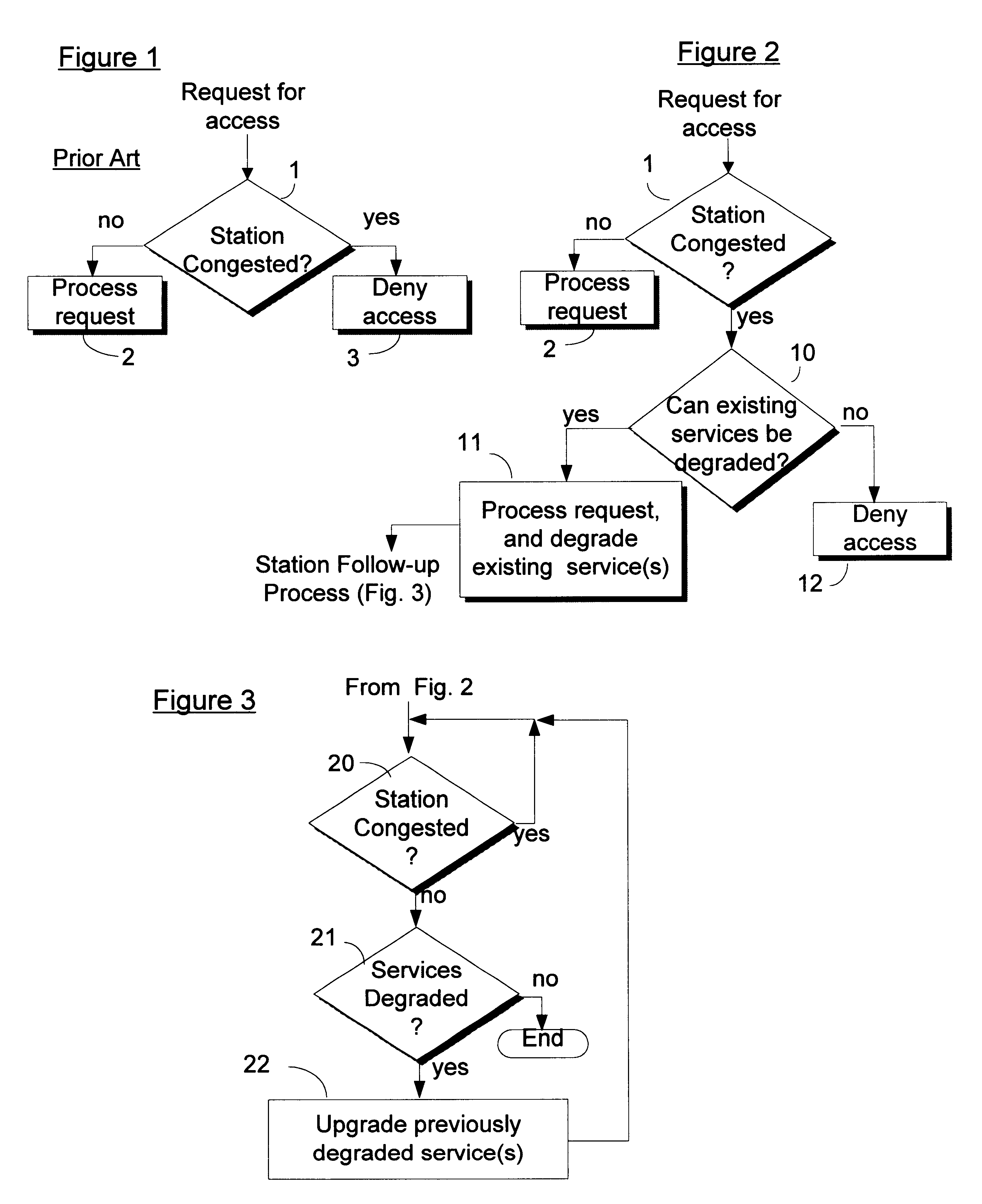Improving access to congested networks
- Summary
- Abstract
- Description
- Claims
- Application Information
AI Technical Summary
Benefits of technology
Problems solved by technology
Method used
Image
Examples
Embodiment Construction
specific example of how such private networks can beneficially use the present invention is explained with reference to FIGS. 9 and 10. In this example, a private network maintained by a typical banking enterprise is illustrated and discussed. However, it will be apparent that private networks of other enterprises could easily be adapted to use the invention in a similar manner.
FIG. 9 provides a simplified view of the just mentioned private network maintained by a banking enterprise, and FIG. 10 is a flowchart providing a simplified overview basis for explaining how the invention can be applied to the network shown in FIG. 9.
In FIG. 9, central processing site 100 exchange data with bank branches 101 through regional satellite centers (RSC's) 102 and leased lines 104. Lines 104 are generically designated "links" since they could be implemented either on conductive media or as channels on radio links. Backbone network links to customer home sites 106, extending through the Internet sh...
PUM
 Login to View More
Login to View More Abstract
Description
Claims
Application Information
 Login to View More
Login to View More - R&D
- Intellectual Property
- Life Sciences
- Materials
- Tech Scout
- Unparalleled Data Quality
- Higher Quality Content
- 60% Fewer Hallucinations
Browse by: Latest US Patents, China's latest patents, Technical Efficacy Thesaurus, Application Domain, Technology Topic, Popular Technical Reports.
© 2025 PatSnap. All rights reserved.Legal|Privacy policy|Modern Slavery Act Transparency Statement|Sitemap|About US| Contact US: help@patsnap.com



